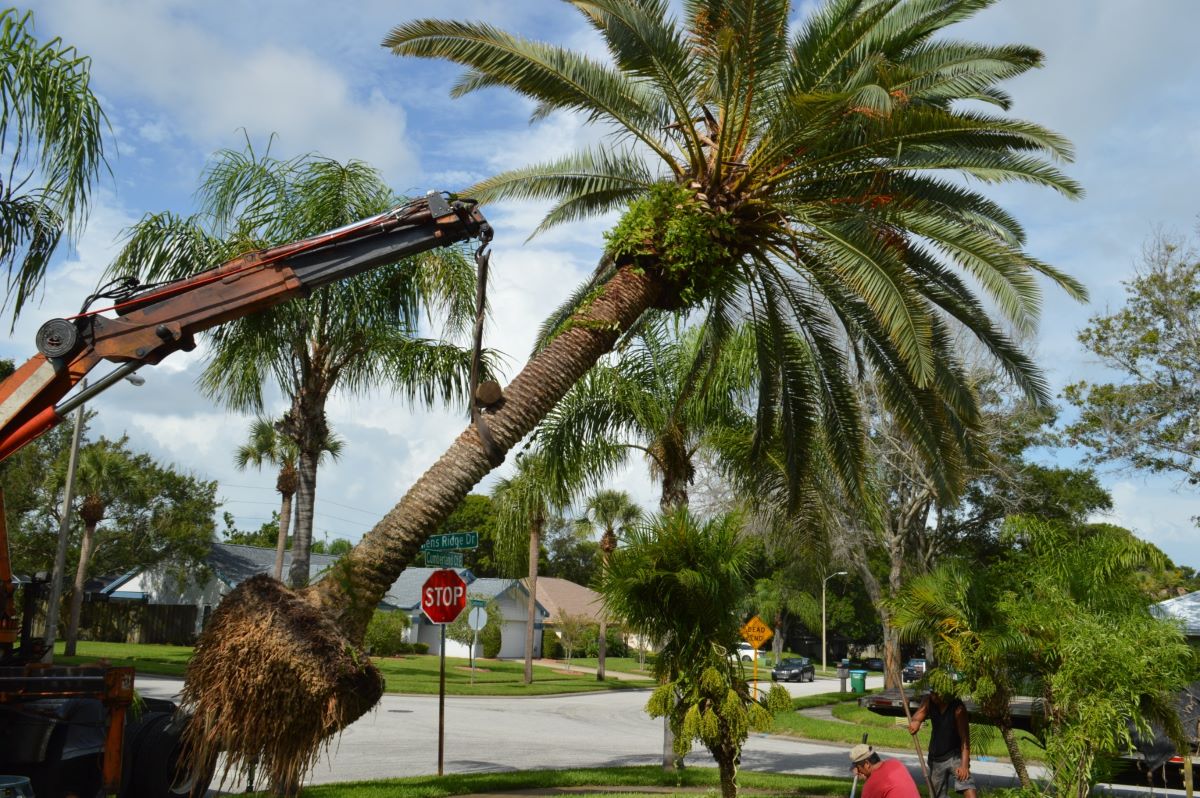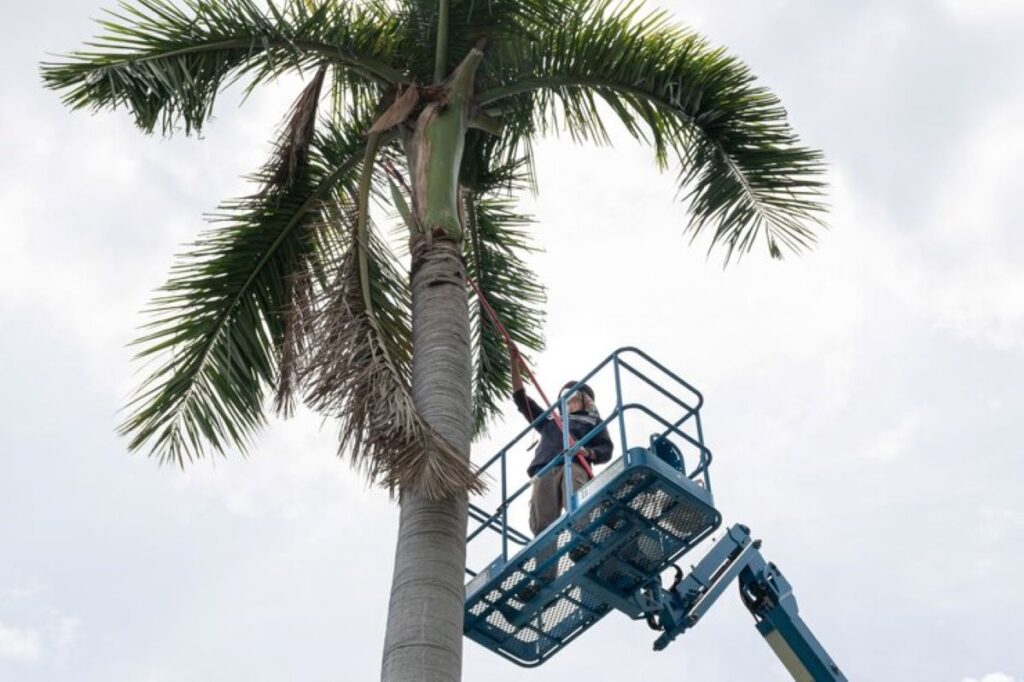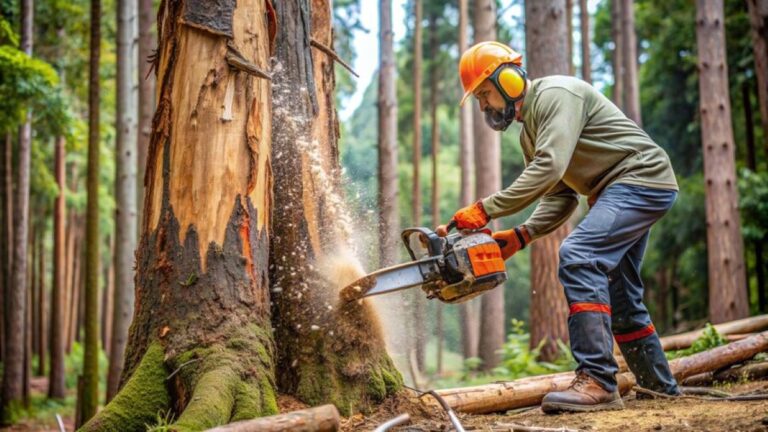Palm trees can add a tropical touch to any garden or landscape, but there may come a time when their removal becomes necessary. Whether due to disease, damage, or simply a change in landscaping plans, safely removing a palm tree is crucial to prevent injury and property damage. This article outlines five essential tips for ensuring a smooth and safe palm tree removal process.
1. Assess the Situation
Before palm tree removal action, it is vital to assess the palm tree’s condition and its surroundings. Look for signs of disease, such as yellowing fronds or a rotting trunk, which may indicate that the tree is beyond saving. Additionally, consider the tree’s height and proximity to structures, power lines, and other trees. Understanding these factors will help determine the best approach for removal.
Consider the Tree’s Size
The size of the palm tree plays a significant role in the removal process. Smaller trees can often be removed by a single person with basic tools, while larger trees may require professional assistance. If the tree is over a certain height, it is advisable to consult with a tree removal expert to ensure safety. Furthermore, the species of palm can also influence the removal process; for instance, some varieties have particularly fibrous trunks that can complicate the cutting process. It is essential to identify the species to prepare adequately for the task at hand.
Evaluate Surrounding Structures
Take note of any buildings, fences, or power lines near the palm tree. This evaluation is crucial, as falling branches or the tree itself could cause significant damage. If the palm tree is too close to these structures, professional help is highly recommended to mitigate risks. Additionally, consider the local environment; for example, if the area is prone to high winds or storms, the risk of falling debris increases significantly. Understanding the local weather patterns can provide further insight into the urgency of the removal process, especially if the tree shows signs of instability or decay.
2. Gather the Right Tools
Having the appropriate tools is essential for a safe and effective removal process. Depending on the size of the palm tree, the tools required may vary. Basic tools include a chainsaw, hand saw, shovel, and safety gear such as gloves, goggles, and a hard hat. It is also wise to consider the terrain and accessibility of the area where the palm tree is located, as this may necessitate additional equipment, such as a ladder or even a stump grinder for complete removal.
Essential Equipment
For smaller palm trees, a hand saw or pruning saw may suffice, while larger trees will require a chainsaw for efficient cutting. A sturdy shovel will be necessary for digging out the root ball, and a rope or harness can be helpful for larger trees to control the fall direction. Additionally, having a wheelbarrow on hand can facilitate the transportation of debris and cut branches, making the process more efficient. If the palm tree is particularly large or in a confined space, a professional-grade chainsaw may be advisable to ensure a clean cut and reduce the time spent on the task.
Safety Gear is Non-Negotiable
Always prioritise safety by wearing appropriate gear. Goggles protect the eyes from flying debris, while gloves provide grip and protect hands from cuts. A hard hat can prevent head injuries in case of falling branches. Ensuring that all safety measures are in place will significantly reduce the risk of accidents during the removal process. Furthermore, wearing sturdy, non-slip boots can provide additional support and stability, especially when working on uneven ground. It is also prudent to have a first aid kit nearby, just in case of any unexpected injuries, as well as a mobile phone to call for help if needed. Taking these precautions will not only safeguard your wellbeing but also contribute to a more organised and efficient removal process.

3. Plan the Removal Process
Once the assessment is complete and the necessary tools are gathered, it is time to plan the removal process. A well-thought-out plan will help ensure that the tree is removed safely and efficiently, without causing damage to the surrounding area.
Choose the Right Time
Timing can greatly affect the success of the removal. It is best to remove palm trees during their dormant season, typically in late autumn or winter. This timing reduces the risk of injury to the tree and surrounding plants, as well as making the process easier due to the lack of foliage. You may like to visit https://peiliminiatures.com/tree-removal-cost-explained-factors-that-affect-your-budget/ to get more about factors that affect tree budget.
Establish a Safe Zone
Before beginning the removal, establish a safe zone around the palm tree. This area should be clear of people, pets, and any valuable items. Inform anyone nearby about the removal process and ensure they stay at a safe distance. This precaution will help prevent accidents and injuries during the operation.
4. Execute the Removal Safely
With the plan in place and safety measures established, it is time to execute the removal. This stage requires careful attention to detail and adherence to safety protocols to avoid mishaps.
Cutting the Tree
Begin by removing any fronds from the palm tree, as this will reduce its weight and make it easier to manage. When cutting the trunk, make a notch cut on the side facing the direction you want the tree to fall. This cut will guide the tree as it falls. It is essential to maintain control and keep an eye on the direction of the fall.
Managing the Fall
As the tree begins to fall, move quickly and safely away from the area. Always have an escape route planned in advance. If the tree is large, consider using ropes to help guide its fall and prevent it from hitting nearby structures. This step is crucial for ensuring the safety of both the operator and the surrounding environment.
5. Clean Up and Dispose of Debris
After successfully removing the palm tree, the final step is to clean up the debris. This process is essential not only for aesthetic reasons but also for safety. Leftover branches and trunk pieces can pose hazards if not properly disposed of.
Disposing of the Tree
Consider the best way to dispose of the palm tree. Many local councils offer green waste collection services, which can be an excellent option for disposing of the tree. Alternatively, the wood can be chipped for mulch or used for firewood, depending on its condition.
Preparing the Site for Future Use
Once the debris is cleared, assess the site for any remaining roots. If the area is to be replanted, it may be necessary to remove the root ball completely. This process can be labour-intensive, but it is essential for ensuring that new plants have the space and nutrients they need to thrive.

Conclusion
Removing a palm tree from your property can be a daunting task, but with the right preparation and precautions, it can be done safely and effectively. By assessing the situation, gathering the right tools, planning the removal process, executing it carefully, and cleaning up afterwards, the risks associated with palm tree removal can be significantly minimised. Always consider consulting with professionals for larger trees or complex situations, as their expertise can ensure a safe and efficient process.
In summary, whether for aesthetic reasons or due to damage, knowing how to safely remove a palm tree is an invaluable skill for any property owner. By following these tips, you can ensure that your palm tree removal is as safe and hassle-free as possible.


